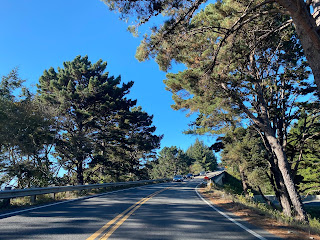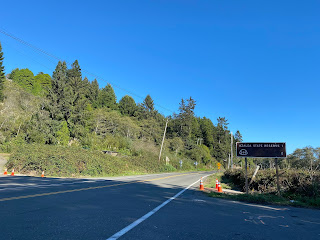During 2016 while visiting Northern California I ended up taking California State Route 200 as a cut-off from US Route 101 east to California State Route 299.
Part 1; the history of California State Route 200
North Bank Road along the Mad River existed before it was added to the State Highway System. North Bank Road can be seen as a connecting road in the vicinity of Arcata between Legislative Route 1 (future US 101) east to Legislative Route 20 (future US 299/CA 299) on the 1917 California State Automobile Association Map of California.
North Bank Road was added to the State Highway System during 1933 as Legislative Route 85. Legislative Route 85 can be seen aligned between US 101/Legislative Route 1 and US 299/Legislative Route 20 on the 1935 California Division of Highways Map of Humboldt County.
During the 1964 State Highway Renumbering Legislative Route 85 was assigned CA 200. The change from Legislative Route 85 to CA 200 can be seen on the 1964 Division of Highways State Map.
CA 200 appears to have been field signed by 1969 as indicated by the Division of Highways State Map from said year. Since 1969 there has been virtually no changes to CA 200 and the highway has appeared to have always followed the same general alignment on North Bank Road.
Part 2; a virtual drive on California State Route 200 westbound
Our virtual drive on CA 200 begins on CA 299 westbound. CA 299 westbound junctions CA 200 westbound at Exit 2. Note; all below images are take from Google Street View as I didn't have the presence in mind to take a photo log of CA 200 back during 2016.
CA 200 west is signed as a bicycle route due to the present expressway status of US 101 and CA 299. CA 200 initially is wide enough shoulder to accommodate bicycle traffic but quickly narrows.
CA 200 upon narrowing approaches a bluff on the north bank of the Mad River.
CA 200 west continues on a largely direct line whereas the Mad River meanders away via a gooseneck. Upon pulling away from the Mad River CA 200 opens onto a valley landscape.
At Post Mile HUM 1.293 CA 200 intersects Azalea Avenue which is the access point for Azalea State Reserve.
CA 200 west again meets the Mad River and climbs to a bluff along the north bank.
CA 200 west terminates at the modern US 101 expressway and an at-grade intersection with US 101 Business on Central Avenue.
Part 3; a drive on California State Route 200 eastbound
From US 101 southbound CA 200 begins from Exit 718 at North Bank Road. CA 200 eastbound begins at the end of the southbound ramp on the US 101 Business Route.
CA 200 eastbound makes a left hand turn at the US 101 northbound ramp at Postmile HUM R0.42 onto North Bank Road.
Azalea State Preserve is signed as 1 mile away on CA 200 east. CA 299 is signed as 2 miles away on CA 200 east.
At Postmile HUM 1.289 CA 200 east intersects Azalea Avenue which is signed as access to the Azalea State Reserve.
CA 200 eastbound follows North Bank Road to a terminus at CA 299.


































Comments